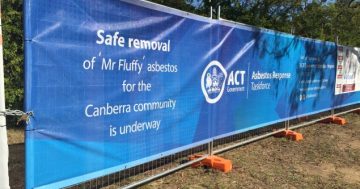Real estate agents, landlords and homeowners of Mr Fluffy houses will have a better understanding of their obligations in regards to asbestos management, duty of disclosure, documentation with the release of new asbestos guidance material for the ACT real estate sector.
Minister for Workplace Safety and Industrial Relations, Simon Corbell, today announced release of the new material.
“This guidance material is the first part of a range of measures which will assist those in the real estate sector, as well as homeowners, buyers and other stakeholders to manage the risks associated with asbestos,” Mr Corbell said.
“Real estate agents have a number of legal obligations across a variety of legislation. With an issue as complex as asbestos, it is understandable that these obligations may become confusing.
“This guidance material covers the relevant requirements, as well as general asbestos management, duty of disclosure, documentation and background information to ensure a clear and consistent approach can be taken.”
The guidance material has been developed by the ACT Office of Regulatory Services in consultation with the Real Estate Institute of the ACT and includes information on homes with remnant loose-fill asbestos insulation, also known as ‘Mr Fluffy’ asbestos.
“The ACT government has worked in partnership with the Real Estate Institute of the ACT in developing this important resource.
“This document clearly outlines the expectations for those in the real estate sector when it comes to managing properties containing asbestos, and the continued cooperation in this area by the institute is valued.
“The issues associated with Mr Fluffy asbestos have caused a great deal of distress amongst ACT residents, and it is important to address what can be done to help those affected.
“This guidance material will be followed by further measures to inform and assist members of our community who are dealing with the difficulty of asbestos issues.”
(Simon Corbell Media Release)





















